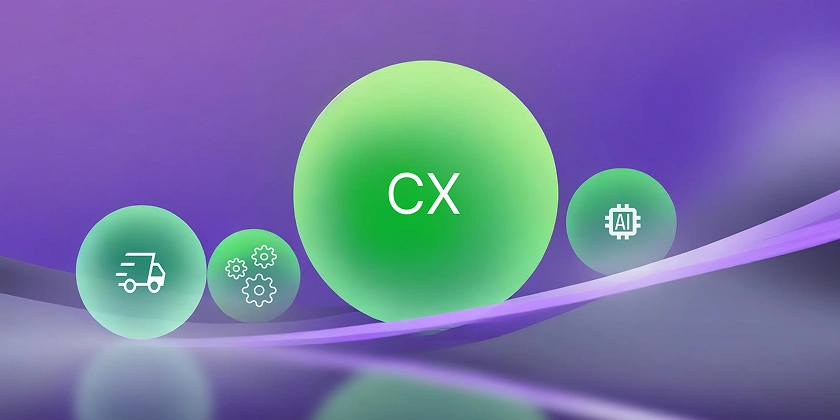From Chatbots to Autonomous Assistants
The customer experience landscape has undergone a remarkable transformation over the past decade. What began as simple rule-based chatbots responding to predetermined queries has evolved into sophisticated autonomous AI agents capable of understanding context, learning from interactions, and delivering personalized solutions in real-time. The Four Generations of Customer Experience Automation First Generation: Rule-Based Chatbots (Early 2000s) Remember those frustrating early chatbots? They operated on simple if-then logic with keyword matching and decision tree structures. A slight variation in phrasing would break the entire interaction, leading to the dreaded "I don't understand" response or endless loops of irrelevant suggestions. Second Generation: NLP-Enhanced Virtual Assistants (Mid-2010s) Advances in Natural Language Processing brought more flexible assistants like Siri, Google Assistant, and Alexa. These systems could understand variations in language, recognize intents behind queries, and provide more natural-sounding responses. However, they still struggled with ambiguity and maintaining context over extended interactions. Third Generation: AI-Powered Conversational Agents (2018-2020) Machine learning and deep learning techniques enabled agents to learn from data and improve over time. These systems featured better contextual awareness, personalization capabilities, and integration with knowledge bases. They could understand not just what customers were asking for but also why they were asking. Fourth Generation: LLM-Powered Autonomous AI Agents (Present) With the introduction of Large Language Models like GPT-4, Claude, and Gemini, we entered the current era: autonomous AI agents that combine foundation model intelligence with specialized components for task execution. These systems can proactively solve problems, make recommendations, and handle complex workflows without human intervention. Business Impact: The Numbers That Matter The AI agent market, valued at $5.4 billion in 2024, is projected to reach $47.1 billion by 2030. This explosive growth is driven by businesses seeking to provide 24/7 support without proportionally scaling human resources. The quantifiable benefits are compelling: Cost efficiency: AI agents typically cost 60-80% less per interaction than human agents Resolution speed: Average resolution time decreases by 40-60% Conversion improvements: Personalized recommendations increase conversions by 15-30% Reduced abandonment: Immediate assistance decreases cart abandonment by 15-20% Real-world success stories validate these numbers: Public Service Credit Union achieved a 24% reduction in agent-serviced calls within 30 days Bosch reduced average employee query resolution time by 60% Henkel boosted brand loyalty with an AI assistant capable of identifying 2,500+ substance variations for stain treatment advice Looking Ahead: The Future of AI Agents As we look to the horizon, several trends are emerging that will further revolutionize customer experience: Multi-modal interactions: Seamlessly integrating text, voice, visual, and gesture recognition Proactive engagement: Anticipating needs and preventing problems before they occur Ecosystem orchestration: Coordinating across complex business systems and partner networks Hyper-personalization: Adapting communication style and recommendations to individual preferences Ethical AI practices: Implementing transparency, explainability, and bias mitigation The Key to Successful Implementation While the potential benefits are enormous, implementing AI agents requires careful planning and rigorous testing across multiple dimensions: Functional testing to ensure coherent conversations and task completion Performance testing to guarantee efficiency at scale Accuracy testing to verify correctness of information Specialized AI testing to identify hallucinations and bias This is where our expertise comes in. Our comprehensive assessment helps businesses identify gaps in their current AI agent implementations and provides actionable insights for improvement. Take the Next Step in Your AI Journey The evolution from simple chatbots to autonomous AI agents represents one of the most significant transformations in how businesses interact with customers. For organizations ready to make this transition, the rewards in efficiency, customer satisfaction, and business growth are substantial and within reach. Want to see how your AI agent measures up? AI performance report today and book a demo to see how your chatbot performs with real users. Our team of experts will analyze your current implementation and provide tailored recommendations to enhance your customer experience strategy. Ready to transform your customer experience?

The customer experience landscape has undergone a remarkable transformation over the past decade. What began as simple rule-based chatbots responding to predetermined queries has evolved into sophisticated autonomous AI agents capable of understanding context, learning from interactions, and delivering personalized solutions in real-time.
The Four Generations of Customer Experience Automation
First Generation: Rule-Based Chatbots (Early 2000s)
Remember those frustrating early chatbots? They operated on simple if-then logic with keyword matching and decision tree structures. A slight variation in phrasing would break the entire interaction, leading to the dreaded "I don't understand" response or endless loops of irrelevant suggestions.
Second Generation: NLP-Enhanced Virtual Assistants (Mid-2010s)
Advances in Natural Language Processing brought more flexible assistants like Siri, Google Assistant, and Alexa. These systems could understand variations in language, recognize intents behind queries, and provide more natural-sounding responses. However, they still struggled with ambiguity and maintaining context over extended interactions.
Third Generation: AI-Powered Conversational Agents (2018-2020)
Machine learning and deep learning techniques enabled agents to learn from data and improve over time. These systems featured better contextual awareness, personalization capabilities, and integration with knowledge bases. They could understand not just what customers were asking for but also why they were asking.
Fourth Generation: LLM-Powered Autonomous AI Agents (Present)
With the introduction of Large Language Models like GPT-4, Claude, and Gemini, we entered the current era: autonomous AI agents that combine foundation model intelligence with specialized components for task execution. These systems can proactively solve problems, make recommendations, and handle complex workflows without human intervention.
Business Impact: The Numbers That Matter
The AI agent market, valued at $5.4 billion in 2024, is projected to reach $47.1 billion by 2030. This explosive growth is driven by businesses seeking to provide 24/7 support without proportionally scaling human resources.
The quantifiable benefits are compelling:
- Cost efficiency: AI agents typically cost 60-80% less per interaction than human agents
- Resolution speed: Average resolution time decreases by 40-60%
- Conversion improvements: Personalized recommendations increase conversions by 15-30%
- Reduced abandonment: Immediate assistance decreases cart abandonment by 15-20%
Real-world success stories validate these numbers:
- Public Service Credit Union achieved a 24% reduction in agent-serviced calls within 30 days
- Bosch reduced average employee query resolution time by 60%
- Henkel boosted brand loyalty with an AI assistant capable of identifying 2,500+ substance variations for stain treatment advice
Looking Ahead: The Future of AI Agents
As we look to the horizon, several trends are emerging that will further revolutionize customer experience:
- Multi-modal interactions: Seamlessly integrating text, voice, visual, and gesture recognition
- Proactive engagement: Anticipating needs and preventing problems before they occur
- Ecosystem orchestration: Coordinating across complex business systems and partner networks
- Hyper-personalization: Adapting communication style and recommendations to individual preferences
- Ethical AI practices: Implementing transparency, explainability, and bias mitigation
The Key to Successful Implementation
While the potential benefits are enormous, implementing AI agents requires careful planning and rigorous testing across multiple dimensions:
- Functional testing to ensure coherent conversations and task completion
- Performance testing to guarantee efficiency at scale
- Accuracy testing to verify correctness of information
- Specialized AI testing to identify hallucinations and bias
This is where our expertise comes in. Our comprehensive assessment helps businesses identify gaps in their current AI agent implementations and provides actionable insights for improvement.
Take the Next Step in Your AI Journey
The evolution from simple chatbots to autonomous AI agents represents one of the most significant transformations in how businesses interact with customers. For organizations ready to make this transition, the rewards in efficiency, customer satisfaction, and business growth are substantial and within reach.
Want to see how your AI agent measures up? AI performance report today and book a demo to see how your chatbot performs with real users. Our team of experts will analyze your current implementation and provide tailored recommendations to enhance your customer experience strategy.
Ready to transform your customer experience?










![From fast food worker to cybersecurity engineer with Tae'lur Alexis [Podcast #169]](https://cdn.hashnode.com/res/hashnode/image/upload/v1745242807605/8a6cf71c-144f-4c91-9532-62d7c92c0f65.png?#)






























































